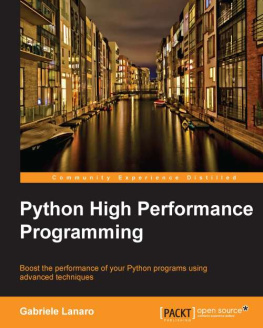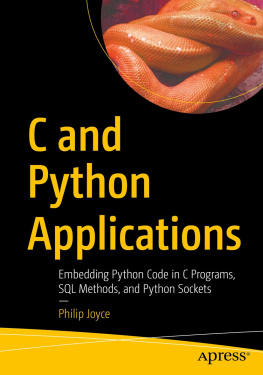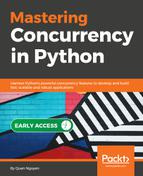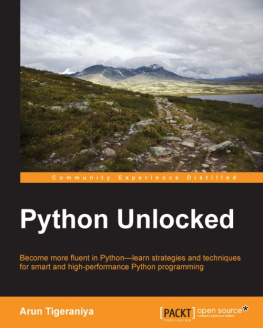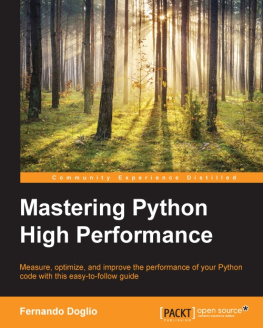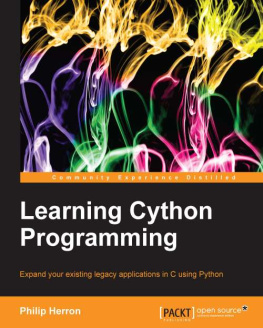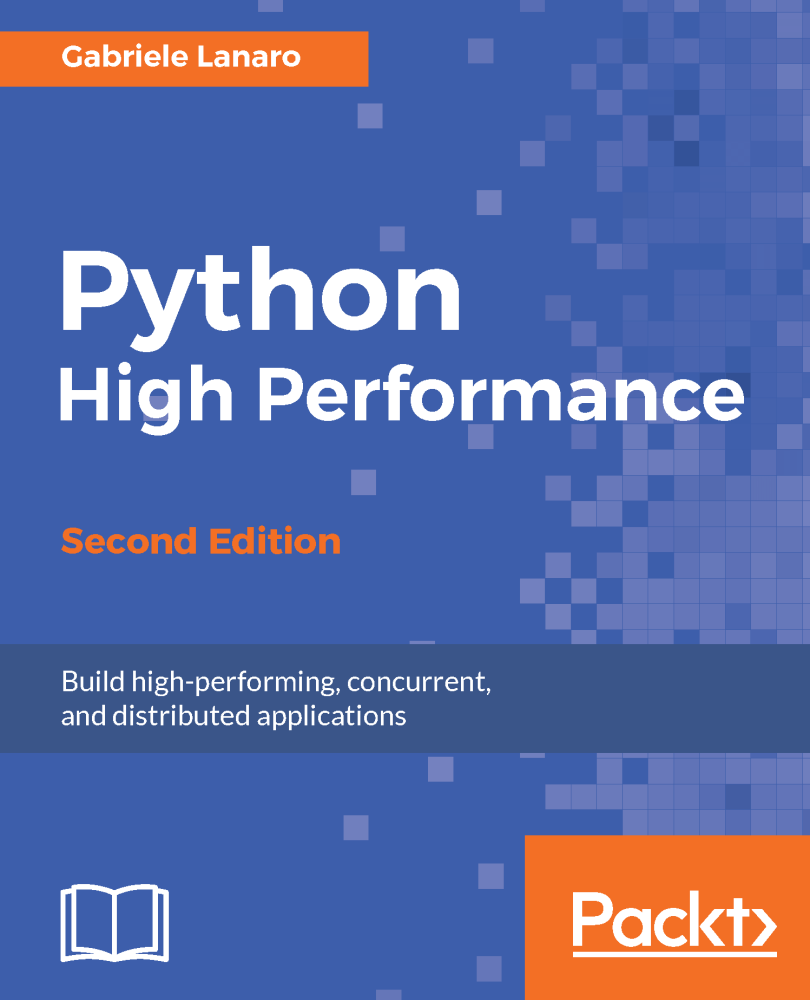
Python High Performance
Second Edition
Build high-performing, concurrent, and distributed applications
Gabriele Lanaro
BIRMINGHAM - MUMBAI
Python High Performance
Second Edition
Copyright 2017 Packt Publishing
All rights reserved. No part of this book may be reproduced, stored in a retrieval system, or transmitted in any form or by any means, without the prior written permission of the publisher, except in the case of brief quotations embedded in critical articles or reviews.
Every effort has been made in the preparation of this book to ensure the accuracy of the information presented. However, the information contained in this book is sold without warranty, either express or implied. Neither the author, nor Packt Publishing, and its dealers and distributors will be held liable for any damages caused or alleged to be caused directly or indirectly by this book.
Packt Publishing has endeavored to provide trademark information about all of the companies and products mentioned in this book by the appropriate use of capitals. However, Packt Publishing cannot guarantee the accuracy of this information.
First published: December 2013
Second edition: May 2017
Production reference: 2250517
Published by Packt Publishing Ltd.
Livery Place
35 Livery Street
Birmingham
B3 2PB, UK.
ISBN 978-1-78728-289-6
www.packtpub.com

Credits
Author Gabriele Lanaro | Copy Editor Shaila Kusanale |
Reviewer Will Brennan | Project Coordinator Ulhas Kambali |
Commissioning Editor Kunal Parikh | Proofreader Safis Editing |
Acquisition Editor Chaitanya Nair | Indexer Tejal Daruwale Soni |
Content Development Editor Vikas Tiwari | Graphics Abhinash Sahu |
Technical Editor Jijo Maliyekal | Production Coordinator Shantanu Zagade |
About the Author
Dr. Gabriele Lanaro has been conducting research to study the formation and growth of crystals using medium and large-scale computer simulations. In 2017, he obtained his PhD in theoretical chemistry. His interests span machine learning, numerical computing visualization, and web technologies. He has a sheer passion for good software and is the author of the chemlab and chemview open source packages. In 2013, he authored the first edition of the book High Performance Python Programming.
I'd like to acknowledge the support from Packt editors, including Vikas Tiwari. I would also like to thank my girlfriend, Harani, who had to tolerate the way-too-long writing nights, and friends who provided company and support throughout. Also, as always, Id love to thank my parents for giving me the opportunity to pursue my ambitions.
Lastly, I would like to thank Blenz coffee for powering the execution engine of this book through electricity and caffeine.
About the Reviewer
Will Brennan is a C++/Python developer based in London with previous experience in writing molecular dynamics simulations. He is currently working on high-performance image processing and machine learning applications. You can refer to his repositories at https://github.com/WillBrennan.
www.PacktPub.com
For support files and downloads related to your book, please visit www.PacktPub.com .
Did you know that Packt offers eBook versions of every book published, with PDF and ePub files available? You can upgrade to the eBook version at www.PacktPub.com and as a print book customer, you are entitled to a discount on the eBook copy. Get in touch with us at service@packtpub.com for more details.
At www.PacktPub.com , you can also read a collection of free technical articles, sign up for a range of free newsletters and receive exclusive discounts and offers on Packt books and eBooks.

https://www.packtpub.com/mapt
Get the most in-demand software skills with Mapt. Mapt gives you full access to all Packt books and video courses, as well as industry-leading tools to help you plan your personal development and advance your career.
Why subscribe?
- Fully searchable across every book published by Packt
- Copy and paste, print, and bookmark content
- On demand and accessible via a web browser
Customer Feedback
Thanks for purchasing this Packt book. At Packt, quality is at the heart of our editorial process. To help us improve, please leave us an honest review on this book's Amazon page at https://www.amazon.com/dp/1787282899.
If you'd like to join our team of regular reviewers, you can e-mail us at customerreviews@packtpub.com. We award our regular reviewers with free eBooks and videos in exchange for their valuable feedback. Help us be relentless in improving our products!
Preface
The Python programming language has seen a huge surge in popularity in recent years, thanks to its intuitive, fun syntax, and its vast array of top-quality third-party libraries. Python has been the language of choice for many introductory and advanced university courses as well as for numerically intense fields, such as the sciences and engineering. Its primary applications also lies in machine learning, system scripting, and web applications.
The reference Python interpreter, CPython, is generally regarded as inefficient when compared to lower-level languages, such as C, C++, and Fortran. CPythons poor performance lies in the fact that the program instructions are processed by an interpreter rather than being compiled to efficient machine code. While using an interpreter has several advantages, such as portability and the additional compilation step, it does introduce an extra layer of indirection between the program and the machine, which causes a less efficient execution.
Over the years, many strategies have been developed to overcome CPython's performance shortcomings. This book aims to fill this gap and will teach how to consistently achieve strong performance out of your Python programs.
This book will appeal to a broad audience as it covers both the optimization of numerical and scientific codes as well as strategies to improve the response times of web services and applications.
The book can be read cover-to-cover ; however, chapters are designed to be self-contained so that you can skip to a section of interest if you are already familiar with the previous topics.
What this book covers
Next page

